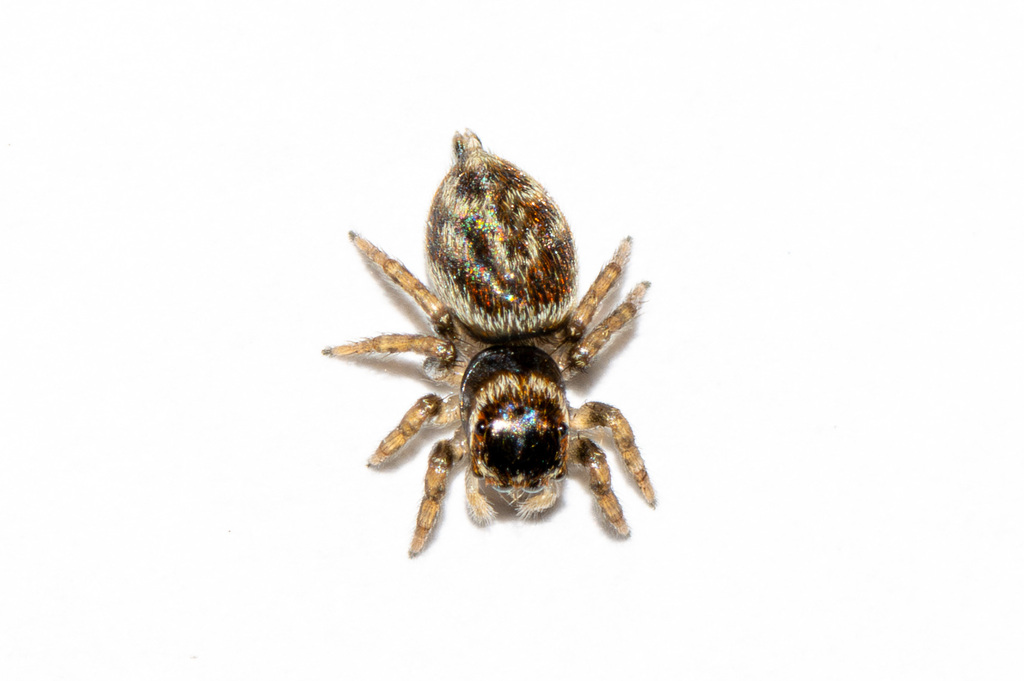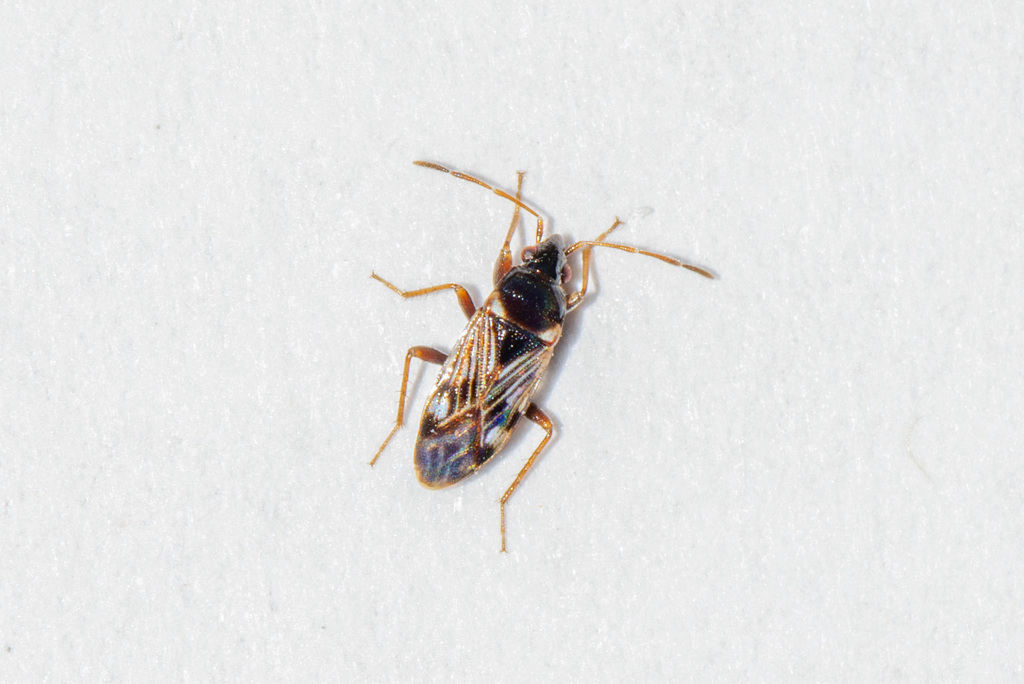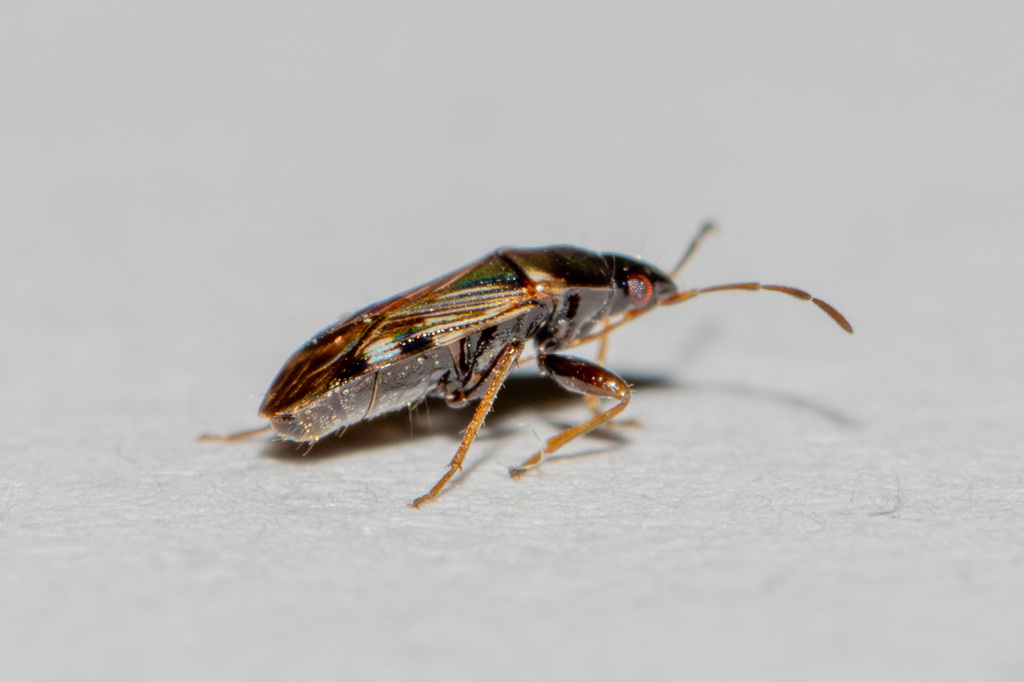
While I’ve now recorded 699 species on my suburban property, this has been primarily through chance encounters, visual searches, and the use of a UV light and moth sheet (that accounts for more than half the species recorded). It’s always been my intention to take a more active approach and perform intentional surveys. So that is what I’m finally doing.
One of the first is a trial leaf litter survey. It’s difficult to conceive that raking up a small section of leaf litter and taking a close look at what is in it will result in much, but I won’t know until we try it. We used a metal tine rake with a fairly narrow head, so that we could get in and around vegetation, to collect approximately two square feet of leaf litter. The area chosen was under a couple of trees that receive mostly morning sunlight. The litter was raked into a dustpan and tipped into a metal bucket. The raking action was relatively quick in an attempt to prevent critters running before we could collect them. We also used the rake to scrape a thin layer of surface dirt into the dustpan too.



The collected litter was poured in several lots from the bucket into a tray, at which point we combed carefully through with paintbrushes searching for any movement. The brushes allowed easy sifting through the litter with the handle end, while the brush head aided in collection of the tiny invertebrates without damaging them. Specimens were brushed into glass vials to be photographed later.

At the time of collection the soil in the area was quite dry at the surface. The litter consisted primarily of Queensland Brush Box (Lophostemon confertus) dry leaves and fruit, Wallangarra White Gum (Eucalyptus scoparia) dry leaves and bark strips, Eucalyptus chip mulch, and a large leaf from a neighbouring tree, possibly a Ficus sp.
Results
See all records from the survey on iNaturalist
From the litter we found 12 invertebrates from around 7 species. We are still looking into IDs for several of the species. First up we found three Jumping Spiders (Salticidae sp.), including a White Banded House Jumper (Maratus griseus), a species that is quite common on the property. The other two are unknown as yet, perhaps juveniles.



We also pulled out 4 Termites, which I suspect are from the Genus Heterotermes, and a Prowling Spider (Miturgidae sp.) of which I failed to take adequate photographs. Seen but not recorded were a couple of Midges or Gnats and a Mite from the Family Anystidae.
The most unexpected find, and a new species for the property, was a Dirt-coloured Seed Bug known as Paramyocara iridescens. This is a tentative ID, but it appears to be the first record in South Australia of this species that has been uploaded to iNaturalist and the Atlas of Living Australia. Its range doesn’t appear to include South Australia. This may be due to lack of surveys. Its presence in a suburban area may also suggest it has been introduced from another state.



Lessons
Not a bad outcome for a first attempt. With 12 invertebrates found in dry leaf litter over only a couple of square feet it goes to show just how many there might be across the whole property. It’s also not surprising then that the introduced Blackbirds spend much of their day scratching around the yard.
Collecting the leaf litter was relatively quick and the patient sifting through it is quite rewarding when you come across a critter. I could have used a Berlese funnel or similar resulting in a higher yield, however the intent here is more about discovery, and less about efficiency. This method also allows for the critters to be returned to the yard after photographic records are made.
Although the red tray sufficed for sorting, a white tray would provide higher contrast and make it a little easier to see the tiniest invertebrates.
It would also pay to more carefully select the location and time of day. Photophobic invertebrates are less likely to be collected if the location is in the sun. Perhaps it would be better to collect in the cooler mornings too.
Nevertheless, one new species added to the records for the property, and perhaps another couple if we can ID the other Jumping Spiders to species.